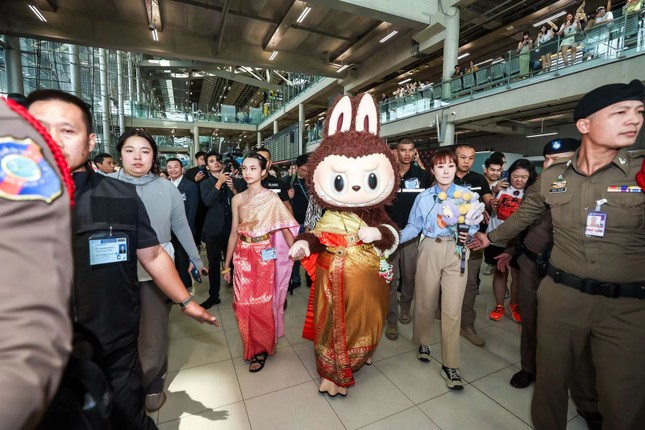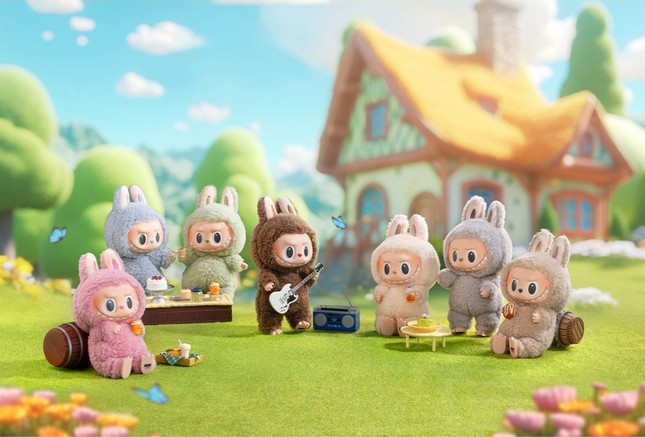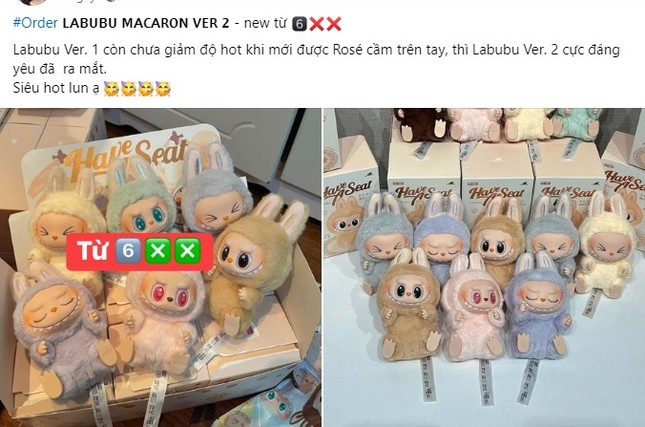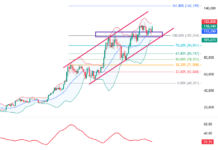On July 1st, at Suvarnabhumi Airport in Bangkok, Thailand, long lines of fans donned white t-shirts featuring the beloved Labubu character, eagerly awaiting the arrival of the “doll monster.”
As a life-sized Labubu approached the crowd with adorable steps, fans were delighted to interact with it. The scene resembled the arrival of a celebrity, with enthusiastic fans eager to catch a glimpse of their idol.

Life-sized Labubu at Bangkok Airport, Thailand, on July 1st.
Toffie, a 35-year-old Thai national at the airport, revealed that she arrived several hours early to ensure she didn’t miss the chance to meet Labubu.
Labubu’s popularity has exceeded the expectations of the business world.
Labubu are playful imps dwelling in the forests of Northern Europe, created by Pop Mart artist Kasing Lung in 2015. These “toy monsters” feature nine teeth, pointed ears, and a mischievous yet cheerful demeanor. Labubu, along with her imp friends, form “The Monsters,” and have garnered a massive global following.

The adorable Labubu creatures easily captivate young people. Image: Kasing Lung
In April, Thai superstar Lisa from the renowned group BlackPink shared a photo on Instagram featuring a Labubu toy, instantly sparking a surge in its popularity across Southeast Asia. The main stores witnessed long lines, and products sold out during live broadcasts. Originally priced at 99 Chinese yuan (13.6 dollars) in China, Labubu now sells for 2,590 Thai baht (512 yuan) in Thailand. Many young enthusiasts stay up all night, even camping out, to secure their purchase.

Both Lisa and Rosé introduced Labubu on their personal pages, further fueling its “hot trend” status.
Due to Labubu’s immense popularity, many Thai tourists in China buy these toys as souvenirs for their friends back home. Xiao Tong, a Chinese woman working in Bangkok, shared with Global Times that during a lucky draw event organized by her company, the first prize was a smartphone, and the third prize was a Labubu toy. Many of her colleagues even hoped to win the third prize instead of the first, she noted.
On Thai streets or public transportation, it’s common to see people carrying bags filled with small toys. Toffie mentioned that Thais love pocket-sized toys, and many choose to carry their favorite lucky-colored Labubu with them.
Vietnamese youth are no exception to this trend
On Vietnamese social media platforms, numerous individuals advertise Labubu for sale at premium prices, with delivery times ranging from 3-5 days to over a week, depending on the rarity of the color. Many young people are quick to embrace this trend, starting small businesses to deliver these super-hot items directly to customers. Owning a Labubu, whether dangling from a handbag or backpack, has become a symbol of being “in the know” for Vietnamese youth.
The pricing for these items is equally diverse, ranging from 500,000 to several million Vietnamese dong, depending on the version, rarity, and demand. Some sellers even “jack up” the price to 22 million dong per item, yet they still sell out.

Labubu is in high demand on Vietnamese social media platforms.
Additionally, the fact that Labubu is sold in blind boxes adds to its appeal among young consumers. Each purchase is a random surprise, and getting the desired item brings a thrill of excitement.
More than 1/5 of new car sales in Thailand are electric vehicles: Mostly from China, leading the sales is a brand about to enter Vietnam
In 2024, electric vehicles will account for over 20% of the total car sales in Thailand, a remarkable rate in the current Southeast Asian market.








































